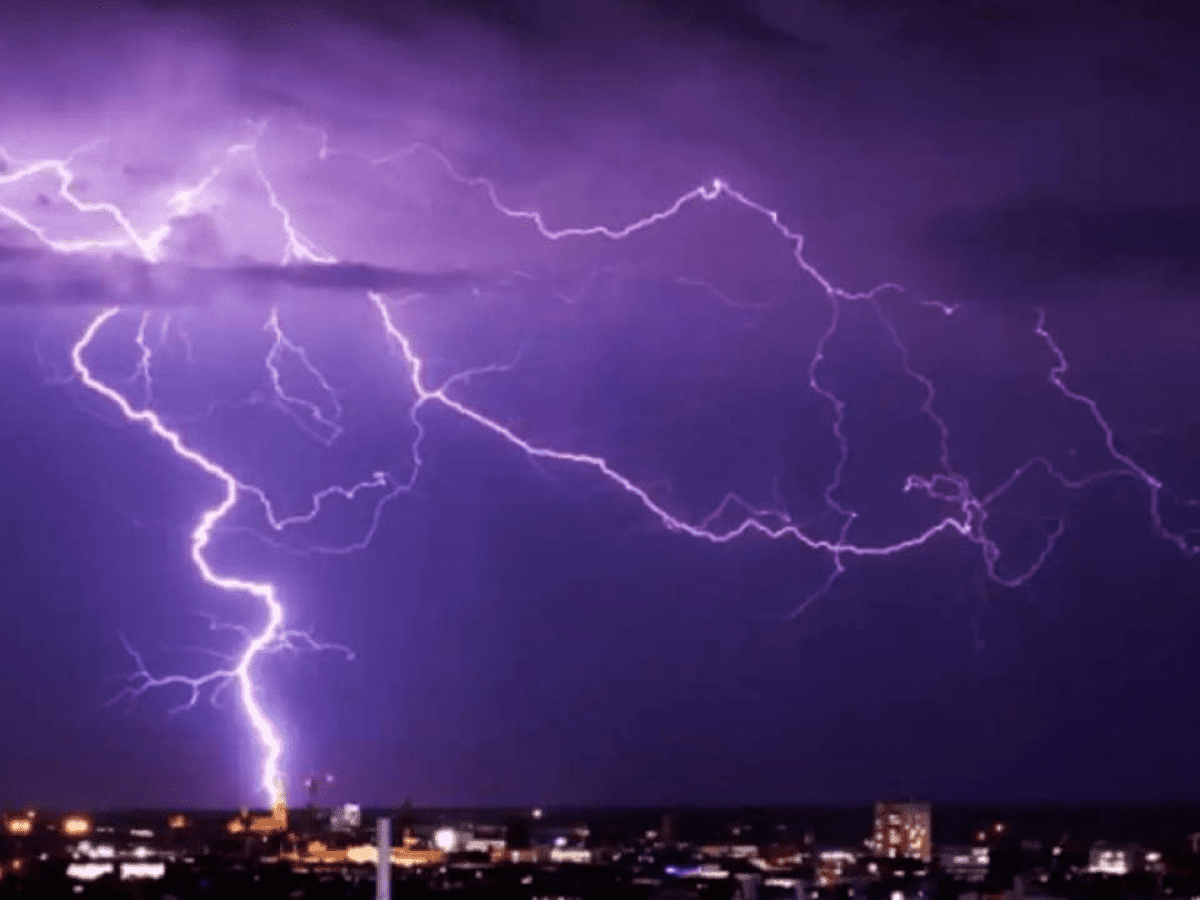
New Delhi: The decade from 2010 to 2020 has been the “deadliest” with an “alarming” spike in deaths due to lightning incidents, according to an analysis of the data shared by the National Crime Records Bureau (NCRB).
The data showed a rise in the average annual fatalities per state and union territory from 38 during 1967-2002 to 61 in the period from 2003-2020, the research showed.
Additionally, average deaths due to lightning in Indian states and union territories (UTs) almost tripled from 28 in 1986 to 81 in 2016, it noted.
A team of researchers, including those from Fakir Mohan University in Odisha, found that lightning caused 1,01,309 deaths between 1967 and 2020, with an “alarming development” from 2010-2010, showing the highest increase.
“The data show an increase in the average annual fatalities per states and UTs from 38 in the period 1967 to 2002, to 61 from 2003 to 2020. Notably, the decade from 2010 to 2020 emerges as the deadliest in terms of lightning incidents,” the authors wrote in the study published in the journal Environment, Development and Sustainability.
“This amounts to an average of 1,876 deaths annually. The long-term national annual average fatality was 46 per state and UT, ranging from 28 (in 1986) to 81 (in 2016),” they added.
Climate change, which is driving extreme conditions, is likely to worsen this situation in the country in the coming years, they said.
Discerning trends at both state and regional levels, the researchers found that Madhya Pradesh registered the highest number of fatalities due to lightning, followed by Maharashtra, Uttar Pradesh, and Odisha.
However, deaths per 1,000 square kilometres of area were found to be the highest in the “relatively small” states of Bihar (79 deaths), followed by West Bengal (76), and Jharkhand (42), compared to those in larger states, they said.
The Central Indian region has seen a consistent increase in deaths due to lightning since records began in 1967, the authors found.
With highest death rates experienced over the years, the region is the most vulnerable to lightning fatalities, followed by northeast India, which witnessed a pronounced escalation beginning in 2001, they said.
According to the research team, the sharp rise in lightning-related incidents in the northeast can be due to deforestation, depletion of water bodies, global warming, along with increased vulnerability of people as they engage in more outdoor activities.
They also said that the high rates of deaths due to lightning in developing and underdeveloped countries can be attributed to combined effects of these factors — people engaging in labour-intensive activities such as farming during thunderstorms, a low human development index, ineffective early warning systems, among others.
While developing countries such as India may be more prepared against large-scale events such as cyclones, floods and droughts, they are the least prepared at the government level against lightning and heatwaves, the researchers said.
The study also critically evaluated how many states and union territories currently have their lightning policies and action plans in place.
“Only seven out of 36 states and UTs have developed these plans to date. Most vulnerable states, including Madhya Pradesh, Odisha, Bihar, West Bengal, Chhattisgarh, Rajasthan, Telangana, Tamilnadu, as well as all northern and northeastern states, have not yet formulated a state lightning action plan as directed by the National Disaster Management Authority,” the authors wrote.
They said that while several studies have analysed lightning in the Indian regions using data from ground and spatial sources, fewer studies have looked at deaths due to lightning at state and regional levels.



